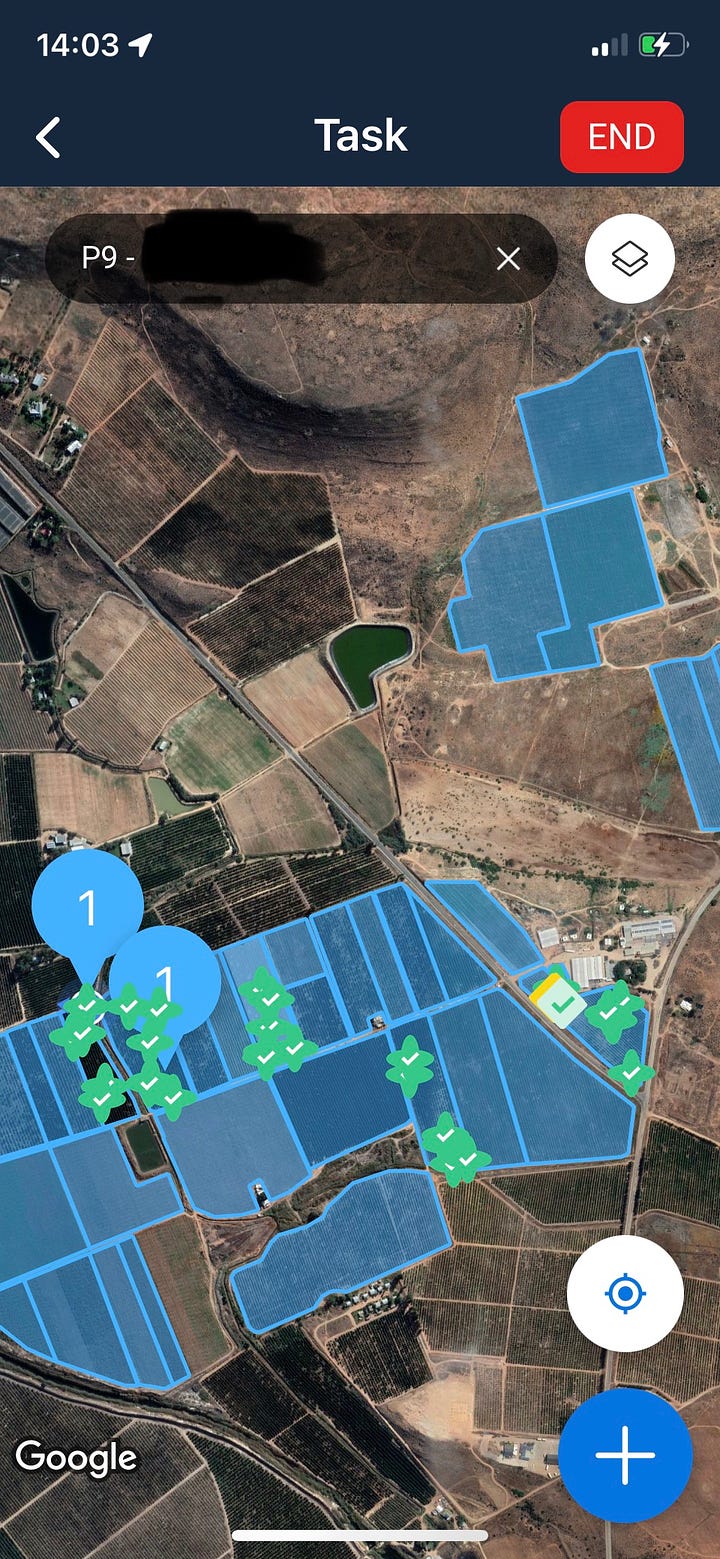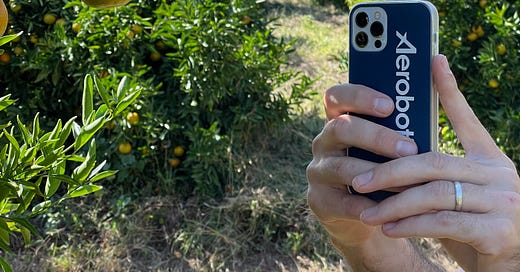Digitising Pest and disease monitoring in fruit and vine orchards
The transition from pen-and-paper to digital formats.
There are many examples of agricultural companies digitising processes for efficiency and reliability of data capture. One of these examples includes the use of the internet and mobile applications to record and store information related to pest and diseases.
Traditionally this information has either been communicated from the in-field workers to the managers by word of mouth, or by pen and paper. In recent years, in more modern times, this information has been captured from pen and paper to a spreadsheet - like Microsoft Excel for example - where it has then been digitised in a way and is stored either on a computer, or on a database, or sent to relevant managers, authorities, and decision makers via email.
This process of double-capturing data is both time consuming and means there are more instances where human error and be a part of the challenges associated with this type of data capture. One way farming operations are able to lower this risk and save time - making operations more efficient - is by capturing the data they need in a mobile app first, and where there is an internet connection, this data can be uploaded to the cloud for review on another mobile device, or on an internet browser supported platform.
There are some extra advantages to this system of record keeping and distributing information (besides being a digital transition which makes for increased efficiency in terms of resources) and that is improved visibility for managers and decision makers, with faster turnaround times - a reduction in the time taken for information to get to the intended person from initial observation to being in front of them in an online report or real-time cloud-based data dashboard.
One technology company that has created such an application is Aerobotics - a South African company with clients all over the world. They have digitised the manual process of capturing pest trap information and now it is in the digital age.
“Seamless digital monitoring from the field to the office is our end-to-end digital pest and disease monitoring solution, which gives you visibility over your monitoring program in real time.” they state on their website. “With immediate in-field reports, you can make swift decisions to intervene before pest or disease pressure increases.
Decisions can be made faster, potentially saving agricultural companies from disaster, or catching a problem too late, when too much damage is already done - costing even more money.
The reports can also be used for authorities that demand such information for record keeping and in line with local or international legislation.
For example Global G.A.P, which they state on their website is, “...a brand of smart farm assurance solutions developed by FoodPLUS GmbH in Cologne, Germany, with cooperation from producers, retailers, and other stakeholders from across the food industry. These solutions include a range of standards for safe, socially and environmentally responsible farming practices. The most widely used GLOBAL G.A.P. standard is Integrated Farm Assurance (IFA), applicable for fruit and vegetables, aquaculture, floriculture, livestock, and more. This standard also forms the basis for the GGN label: The consumer label for certified, responsible farming and transparency.”
The Aerobotics mobile application can work in remote areas, as long as there is a home station or office with a Wifi connection for before and after orchard inspection synchronisation of the application. While in the orchards, the application does not require the internet or mobile signal to function and only relies on GPS systems already built into any modern smartphone.


Data is collected and saved on the phone and once this data is synchronised to the cloud at the end of the work shift, the data is available on their platform called “Aeroview'' where it can be viewed and utilised. A summary of the data captures remains available on the mobile app as well in the event that managers or consultants want to review this information when they are in the orchards themselves, or simply for reasons of convenience.
Accountability is a positive outcome gained from this digitisation of processes. The person inspecting the orchards has a record of their work, that this work was completed, where, and when, and there is record that this information has been stored in the correct way and communicated back to the people that need to see via default of having this information synchronised to the cloud and the digital platform. Likewise, managers know that their workers are completing them correctly and timeously, and that they will get the right information quickly and easily, as long as the person conducting inspections is well trained at what they are meant to be observing (where clues for diseases, insect traps, or similar).
In-application mobile notifications have made this process even more visible for all stakeholders as everyone is informed of when inspection tasks are set, where these are, for when they are due to be completed; and when they are completed the person who set the task initially also gets notified. All these processes are built into the application and happen automatically.
While this specific pest and disease (IPM) mobile application is not actually in the R&D phase, the very nature of the technology means that it is iterative - the technology is always evolving and improving. Product designers and developers utilise client feedback to build the digital tools that will offer the most value in terms of usability and how much it resolved their challenges and problems in relation to their operations.
However, on the fringe of the core product there is always some kind of R&D and technology companies want to keep adding value for their clients and also strive to be continuously innovative. With the advancements in connectivity as well the the hardware available with new modern smartphone it is more possible than ever before to build unique tech solutions that compliment the base digitisation of processes and adds a brand new dimension in terms of problem solving where traditional tool many not have even been used, or they were very rudimentary in nature.
One example of this is how Aerobotics is utilising the high quality cameras and advanced processing power of the latest iPhones to digitally measure fruit and nut sizes in real-time in orchards and vineyards. The same phones that are used to monitor pest traps and other issues, is now being used to provide (together with Artificial Intelligence computing) fruit size distributions, tonnage estimates, and yield forecasting for production managers, farm-group owners, investors, marketers, logistics professionals, pack-houses, and exporters quicker than ever before.
In summary, moving into the digitised world in terms of traditional processes, where data collection or communication (or both) digital processes when they designed for the und user in mind to solve a specific set of problems and challenges can make operational efficiencies a reality and improve the way agricultural organisations are farming and utilising their workforce, managers, and consultants.
The very best technologies solve multiple problems for multiple stakeholders across a large portion of the value chain. This is the power of the fourth industrial revolution, IoT, Ai, and smart technologies in Agriculture, and it is a very exciting time for the industry, that is for sure.
Till next time,
Resources:
South African startup Aerobotics raises $17M to scale its AI-for-agriculture platform https://techcrunch.com/2021/01/21/south-africa-startup-aerobotics-raises-17m-led-by-naspers-foundry/
Aerobotics Tackles Tree Pests with Machine Learning https://aws.amazon.com/solutions/case-studies/aerobotics-case-study/
Aerobotics: Assign, manage and track farming tasks. Published by Aerobotics on May 17, 2023 https://blog.aerobotics.com/plan-manage-track-farming-tasks
Aerobotics: Aeroview InField
Aerobotics: Know your yields every season:






